GUIDE TO FISHING SALTWATER
- Saltwater Fishing Gear
- Saltwater Fishing Bait
- Environment
- Pier Fishing
- Beach or Surf Fishing
- Rock fishing
- Saltwater fishing tips
UNDERSTANDING THE OCEAN
Saltwater fishing provides anglers with a vast opportunity to fish in all types of environments. Many anglers enjoy saltwater fishing as there is a massive range of saltwater fish species that can be caught, however it typically is a little more intimidating due the sheer amount of understanding and obstacles that must be overcome. The fishing opportunities, however, are endless! Saltwater fishing is an entirely different beast then freshwater fishing. Saltwater fishing can be extremely tricky if you do not understand your environment. Unlike a Lake that has fish swimming through at any time of the day, fishing the saltwater may require you to do some hunting and stalking, trying different land structures. Researching locations on google maps will arm you with extremely useful information and give you hints as to how deep certain areas are and whether your location consists of sandy beaches or rocky cliffs.
While beginners may start off targeting smaller fish like perch from the piers and docks, more advanced fisherman may be targeting larger species such as salmon and halibut from the deep seas. Fishing from a boat is typically the best method for saltwater fishing, as it allows you much better mobile access and fish deeper waters. However, it truly does not beat exploring rocky structures on shore and combing the beach looking for that magical spot on foot, therefore shore fishing is what we will be focusing on.
SALTWATER FISHING GEAR
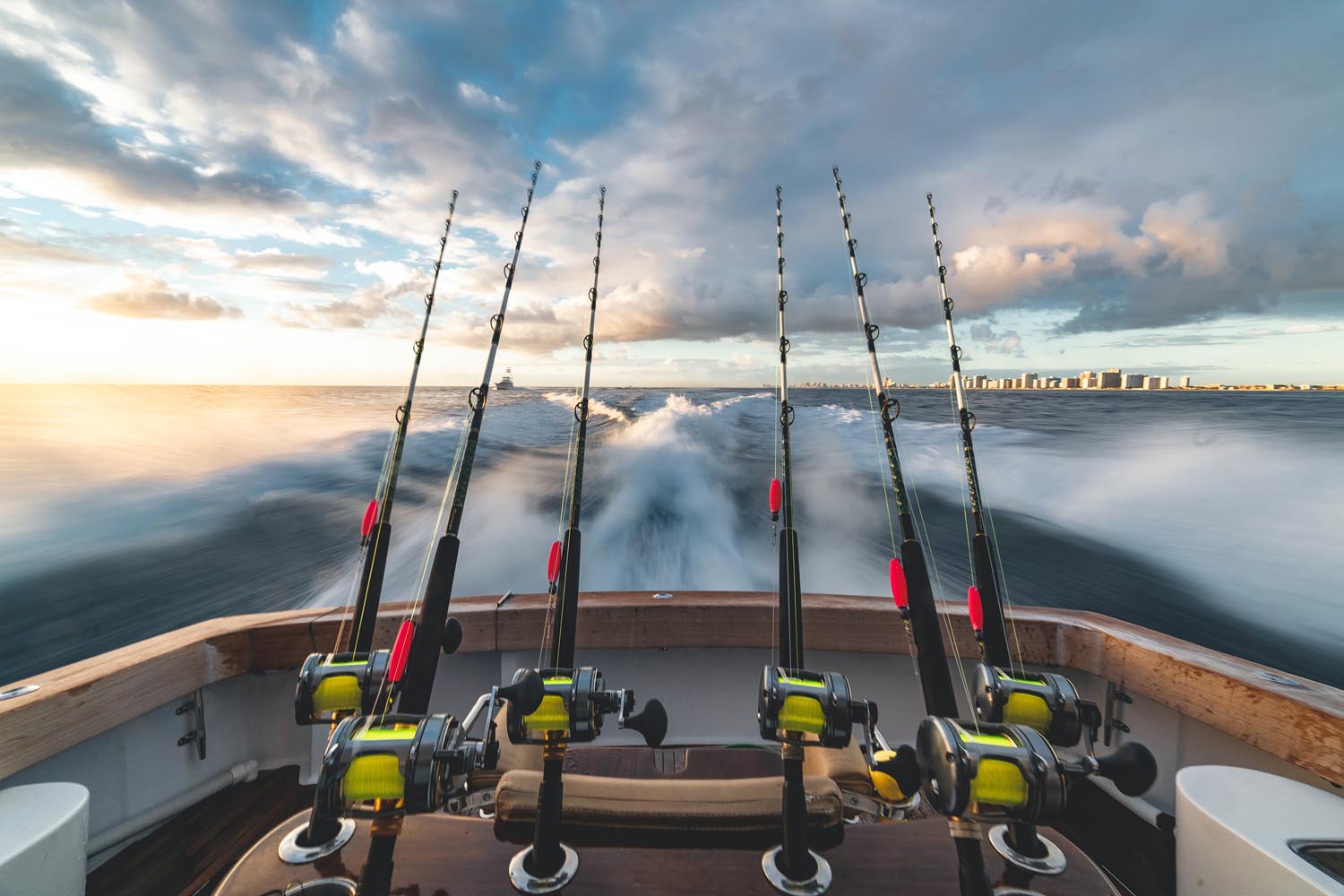
Saltwater fish are generally larger and much more aggressive than their freshwater cousins. This is due to the fact that they are constantly in search of food and fending off their territories. Saltwater fish typically have larger and sharper teeth, fins made of spike and built for fighting. The gear that you use for saltwater will depend on the species you are targeting, however it is still suggested that you increase the strength of the gear you will be using as salt water does corrode your gear much faster. Certain species live along sharp rocky underwater climates which can cut line easily.
You can use most methods of fishing to target saltwater fish from bottom fishing to spin cast, jigging, and fly fishing. You never know if you end up hooking a larger fish, so prepare yourself with at least a medium fast action rod with a length between 7’-12’. A longer rod will provide you with much farther casts, being able to reach larger fish. A longer rod will also help you control fish better, as certain fish will dive and hide between rocks. You should be running line between 10-30lbs in strength. Outfit yourself with a reel that is water resistant, which does not allow salt water inside its body. Make sure you rinse off your gear every time you fish saltwater, as salt will destroy any gear from lures, line to reels.
SALTWATER FISHING BAIT
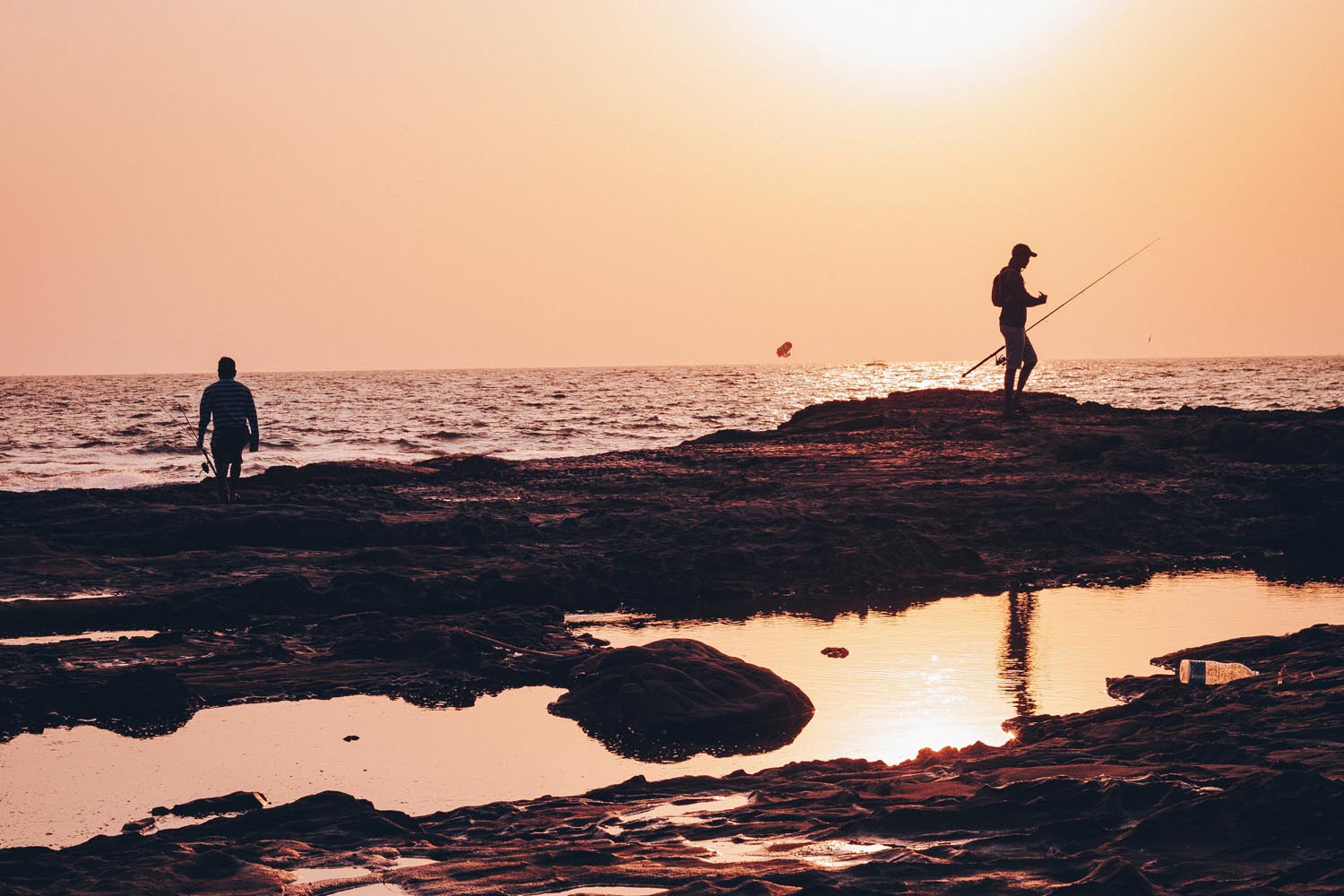 Due to the aggressive nature of saltwater species, the best methods are to cast spoons, spinners and jigs. Switch up sizes and be sure to determine the types of species you are targeting. However, using bait is also extremely effective – Try bottom fishing with raw prawns, or bits of fish or other seafood. Bait will typically always produce, however the larger fishes tend to prefer hitting lures.
Due to the aggressive nature of saltwater species, the best methods are to cast spoons, spinners and jigs. Switch up sizes and be sure to determine the types of species you are targeting. However, using bait is also extremely effective – Try bottom fishing with raw prawns, or bits of fish or other seafood. Bait will typically always produce, however the larger fishes tend to prefer hitting lures.
ENVIRONMENT

Learning to saltwater fish is about adventure on its own, as much as it is about the fish. The water is rougher, the terrain is more rugged, the fish are meaner. From shallow sandy shorelines chasing red tail sea perch to deep sea tuna fishing. Saltwater anglers chase all types of species, but you must be prepared when you begin your saltwater adventure as this is by far one of the most technical but also enjoyable fisheries.
Your fishing environment will usually dictate the types of species you will encounter, so picking your landscape is very crucial. Before you decide to go and try your luck in shore fishing, you must check the local tide charts to determine the high and low tides. One of the most important inshore fishing tip is to base your trips on the tidal movements.
Below are the 3 most common land structures to fish from and we will dive into detail how to fish each environment:
PIER FISHING
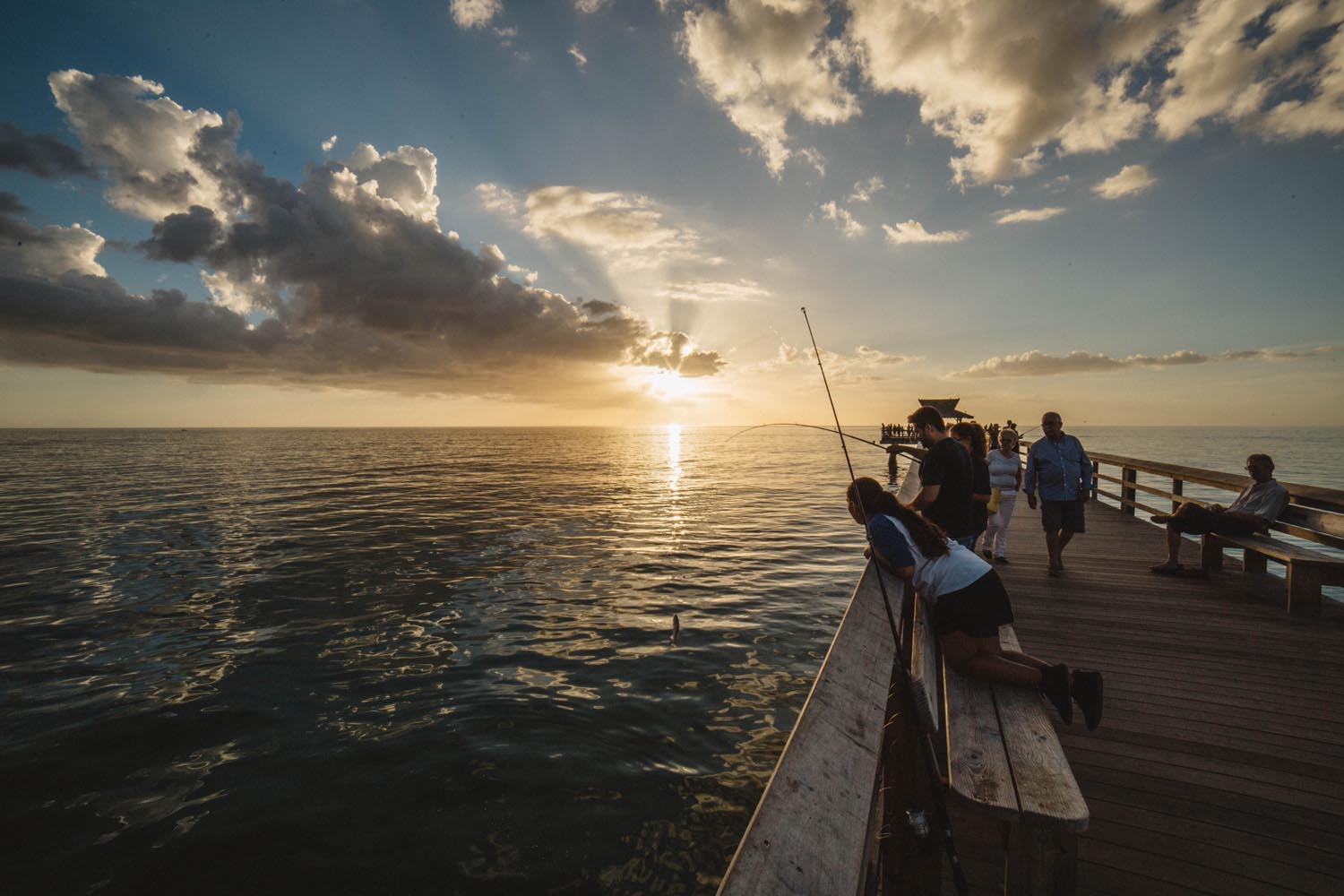
If you are new to saltwater fishing, it would be a good idea to get your feet wet by fishing from a pier first. A Pier provides you with a great range of different fishing methods, a preferred method for most would be to begin by bottom fishing with bait. Using shrimp or prawns or bits of cut up fish is a great method to catch different types of species.There is usually a diverse amount of fish you can catch from a pier due to the range in water depth the pier itself covers. Shiners or perch tend to school around the post structures. With trial and error you will determine the best methods to catch certain species.
Look for rock pilings, bulkheads or drops trying casting spoons and jigs that imitate small fish or shrimp. Due to the smaller sizes of the fish usually found by piers we suggest the following tackle for pier fishing:
- 6’6 – 9’ medium action rod with a corrosion resistant reel
- 8 to 15 pound line in either braided, mono or flourocarbon
- When targeting smaller fish use 1/0 to 3/0 sized hooks (Larger hooks for larger fish)
- Assorted sinkers varying from split shot to egg sinkers. Use larger sinkers to cast farther
- Bait such as prawns, shrimp or pieces of fish.
- If using artificial lures, use jigs, plastic worm tails, spoons and spinners
BEACH OR SURF FISHING
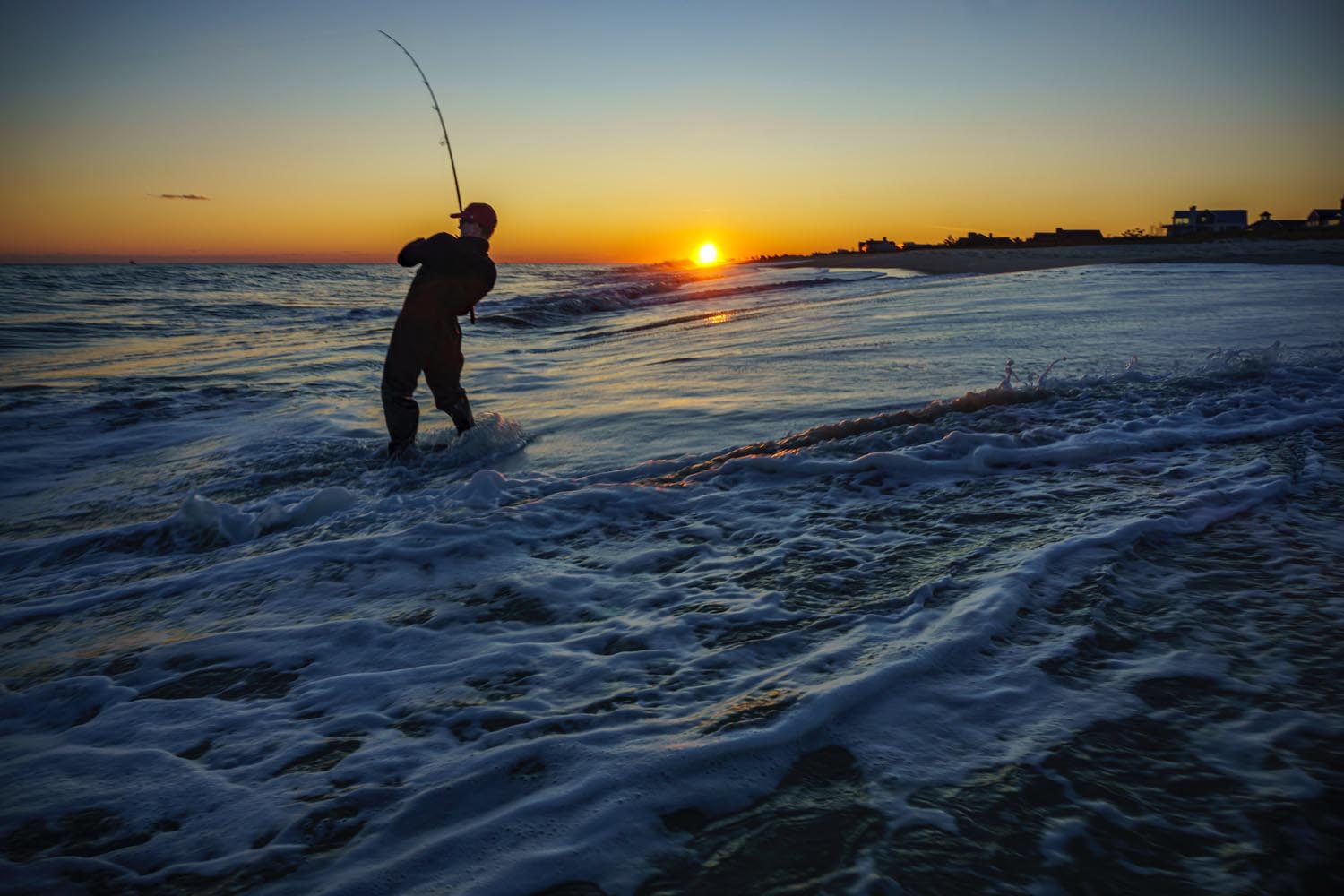
Beach or surf fishing requires a little bit more knowledge of your fishing area. It is best to fully explore your location through the use of Google maps. By exploring if there are drop offs, and determine where the troughs are. Look for man made structures like jetties and breakwaters. These are structures that extend out into the water and influence with the currents, these give anglers a chance to fish deeper pockets of waters. Fish also like to hide within these pockets, as well as feed on passing baitfish or crustaceans.
If you are fishing sandy beaches, look for points where natural sand formation protrude out into the ocean. As the currents follow past these formations, it will collide with shallower banks, creating deeper pockets. Fish tend to hide within these areas. Fish the incoming tide covering these holes and bars as fish congregate within these areas. Fish that feed within these currents swim up and down the entire length of beach looking for food, therefore it is better to be active and fish along the stretch rather than wait in one spot if there is no action.
Try casting a bottom rig into breakers, where the calmer waters meet the large waves. This is what creates these waves crashing. The crashing waves create a sort of pocket or trench, this is an ideal location to cast your bait.
By using longer rods and heavier weights, this will allow you to cast farther into the sea where larger fish tend to be. We suggest using the following for surf fishing
- 9’-12’’ medium to fast action rod with a corrosion resistant reel
- 10-20 pound line in either braided, mono or flourocarbon
- 1 to 4 oz lead weights to cast your rig out as far as possible.
- Bait such as prawns, shrimp or pieces of fish.
- If spring casting: use jigs, plastic worm tails, spoons and spinners
ROCK FISHING
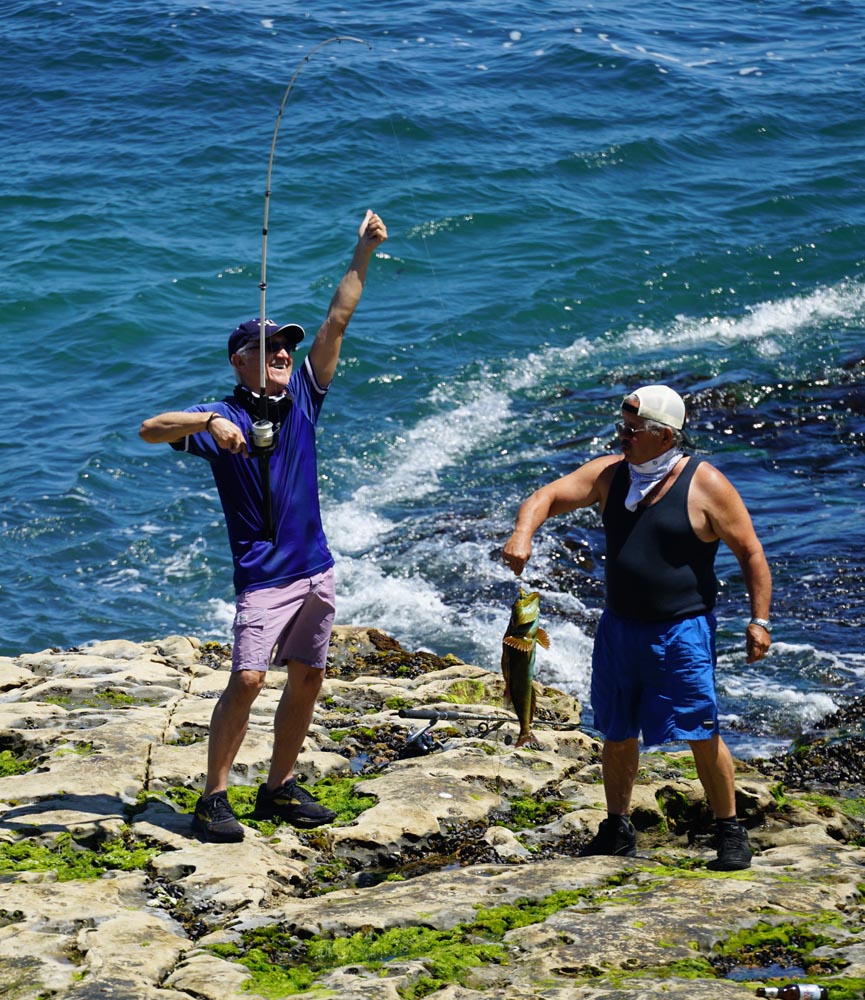
Rock fishing is one of the most advanced methods of fishing saltwater on foot, but also one of the most satisfying. It is highly recommended that you rock fish with a friend as the terrain can be extremely dangerous. Certain rock faces are extremely slippery and the crashing waves can be very dangerous. Start by determining the exact location you will be fishing using Google maps, unlike surf fishing, you cannot just walk the entire stretch fishing every hole.. your mobility will be limited by rock cliffs and pools. So select your locations carefully and fish that specific spot before moving onto your next target. Be wary of tidal changes as you can easily be caught on a rock as the tide lifts.
Due to the jagged terrain and broken structures, these types of areas are fish utopia. You can find all types of species ranging from perch, ling cod to sea bass within these areas. These structures provide a safe haven for them to hide under from predators like seals and birds. There is usually plenty of feed as the shoreline provides tons of food sources such as crabs, small baitfish and other crustaceans.
Start by locating medium sized pools deep enough (10-20 feet) where fish can congregate. Fish these pools thoroughly before moving on to the next. Cover as much water as possible by casting spoons and spinners. Once you make it to the open ocean, cast as far as possible and work your lure to shore slowly. Make sure you cover the entire water column as certain fish like bass congregate mid water, while some such as ling cods will hug the bottom floor. Most of the fishes that inhabit these areas are opportunity feeders meaning they will chase down and grab your bait if it is visible to them. Keep in mind, many of these fish if hooked, will dive and hide in holes. So make sure to keep the fish in total control as once it digs themselves into weeds or holes, it is very hard to get them out without your line breaking!
Be careful of the rocks on your retrieve as the rocks and barnacles are extremely sharp and can cut your line easily. As your lure comes close to you, make sure you retrieve this quickly before snagging up.
The fish in these areas are larger and more aggressive therefore upping your gear is highly recommended:
- 9’-11’ medium to fast action rod with a corrosion resistant reel
- 15 to 30 pound line in either braided, mono or flourocarbon
- Use larger circle hooks sizes anywhere from 1/0 – 5/0
- If bottom fishing: Use sinkers between 1 to 4 oz
- Bait such as prawns, shrimp or pieces of fish.
- If using artificial lures, use 0.5 oz jigs, 4/0 plastic worm tails, ½ to 1 oz spoons or spinners
SALTWATER FISHING TIPS
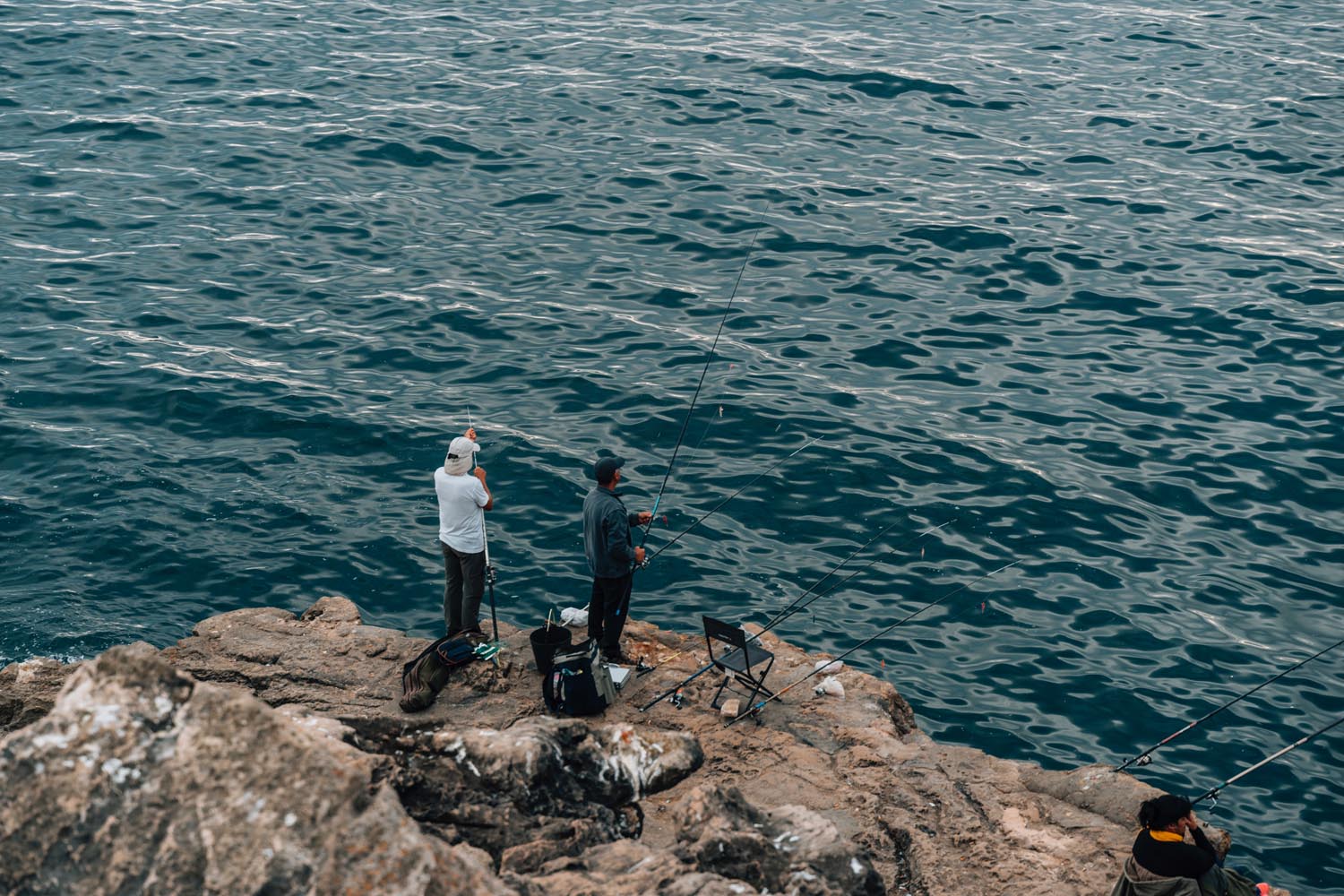
- Saltwater can really wreak havoc on any fishing gear, so always make sure to rinse off your reel, line, and rod after every saltwater fishing trip. It is smart to also rinse off your lures as they can rust very easily.
- When on saltwater, look for feeding birds as this typically means there is a school of bait fish around. And where there is baitfish typically means there are larger fish feeding.
